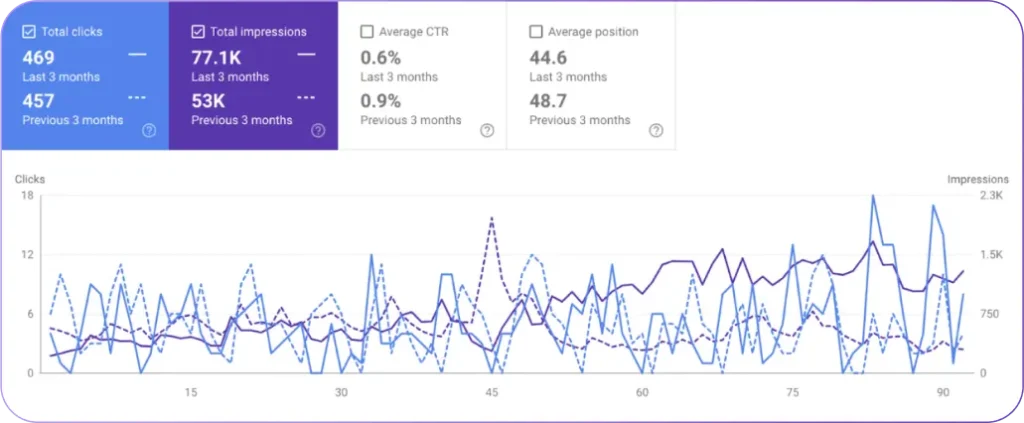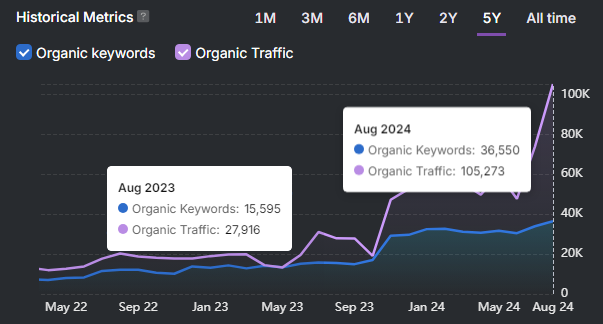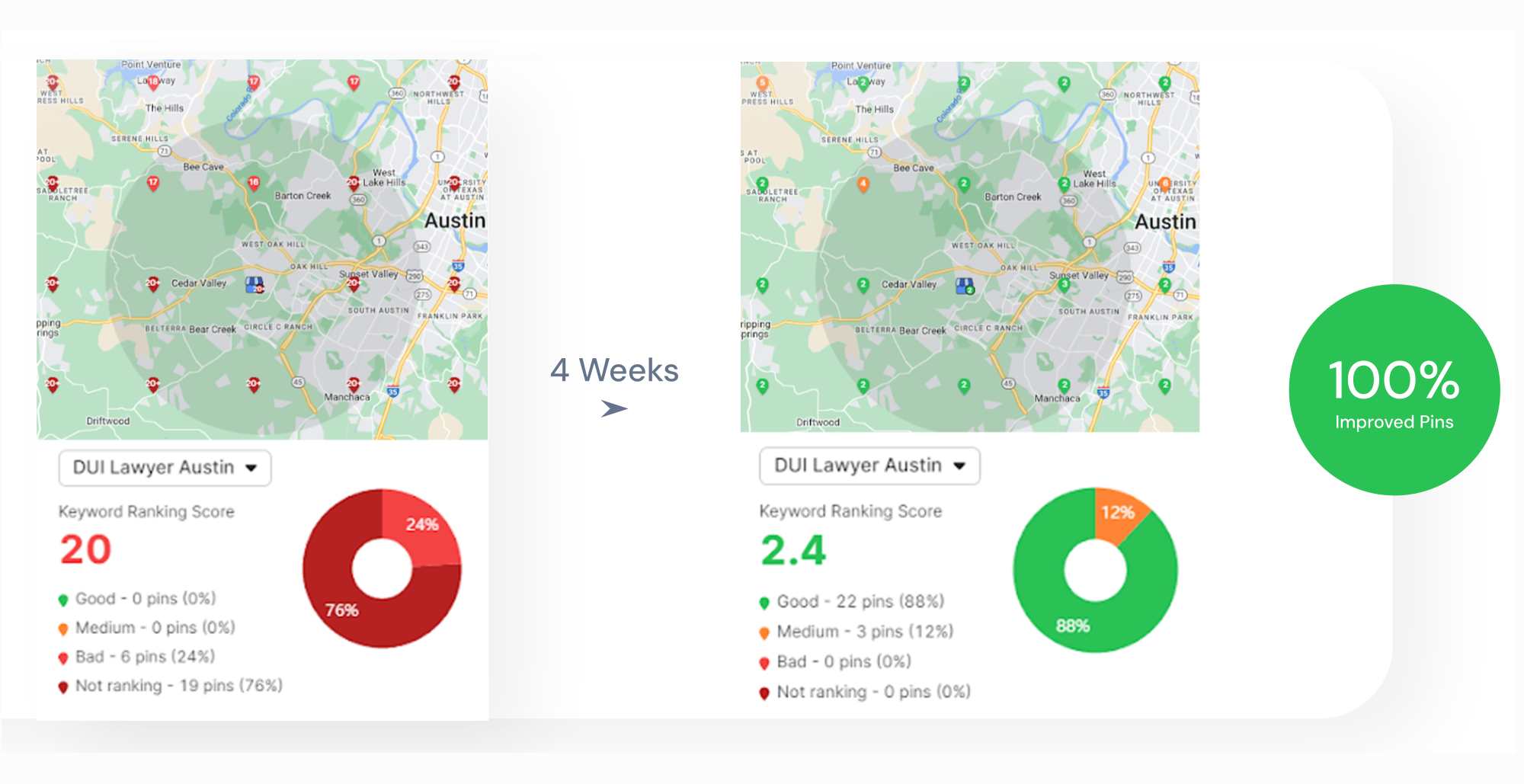International SEO is the gateway to global expansion. It helps businesses reach new audiences across different countries and languages while maintaining strong search visibility worldwide. International SEO strategies are a must-have for companies that are looking to scale beyond their domestic markets and capture international revenue opportunities.
Our international SEO checklist provides a clear roadmap to identify and implement critical global SEO strategies, guaranteeing that you’ll achieve top rankings in international markets throughout 2025.
Strategic Planning and Market Analysis
Before diving into technical implementation, successful international SEO requires strategic planning and thorough market analysis to ensure your efforts align with business objectives and market opportunities.
The Search Atlas SEO Platform helps you evaluate where your current international traffic is coming from and identify markets with the highest potential for your products or services.
1. Identify Your Target Markets
Start by analyzing your existing international traffic patterns to identify the most promising expansion opportunities.
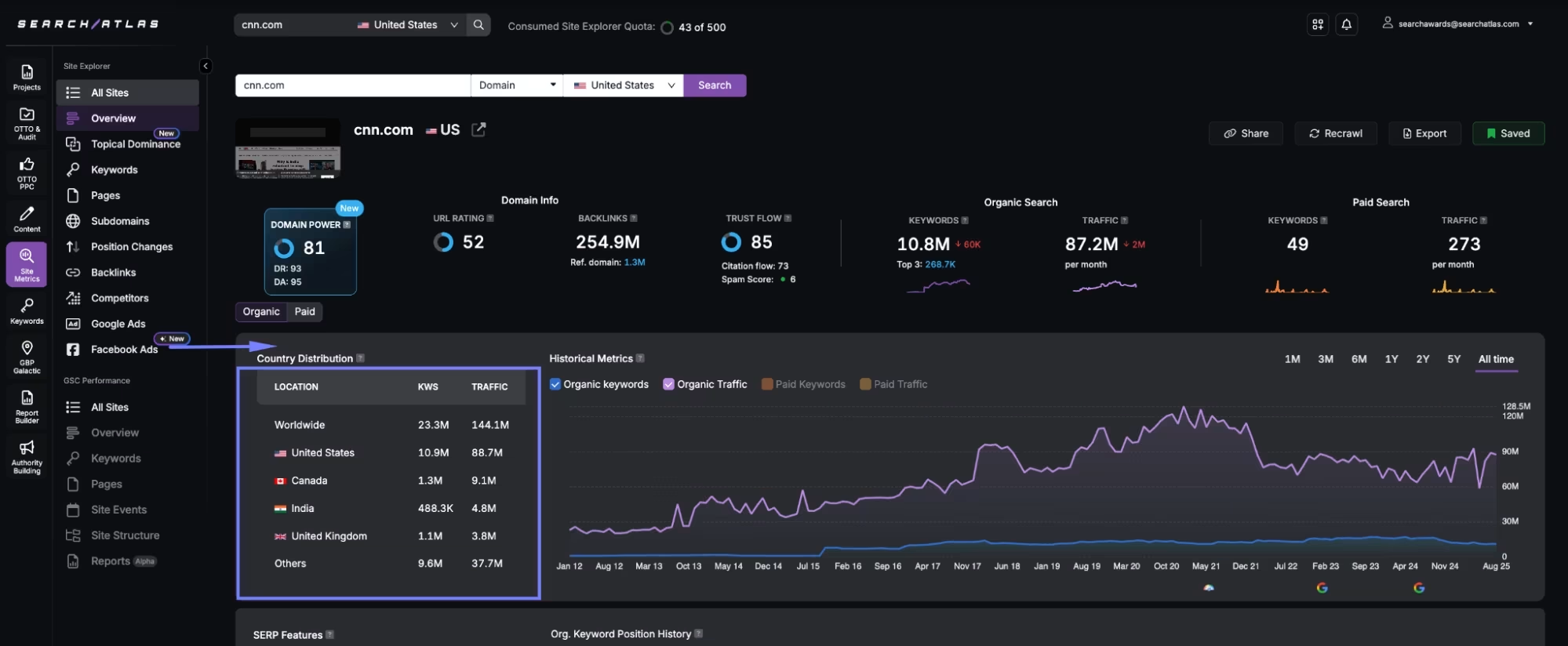
Use the Search Atlas Site Explorer analytics to evaluate current international traffic sources. Look for countries where you're already receiving organic traffic but haven't specifically optimized for those markets.
Consider factors beyond just traffic volume – analyze conversion rates, engagement metrics, and revenue potential for each market. Some markets may have lower traffic but higher conversion value.
2. Conduct In-Depth Market Research
After identifying target markets, conduct comprehensive research to understand demand, competition, cultural differences, and local search behavior.
Analyze language variations and content preferences in each market. Understand cultural nuances that affect how people search and what type of content resonates with local audiences.
Research local competitors using Search Atlas Site Explorer > Competitors to identify gaps and opportunities in your keyword strategy. Study their content approaches, backlink profiles, and technical implementations.
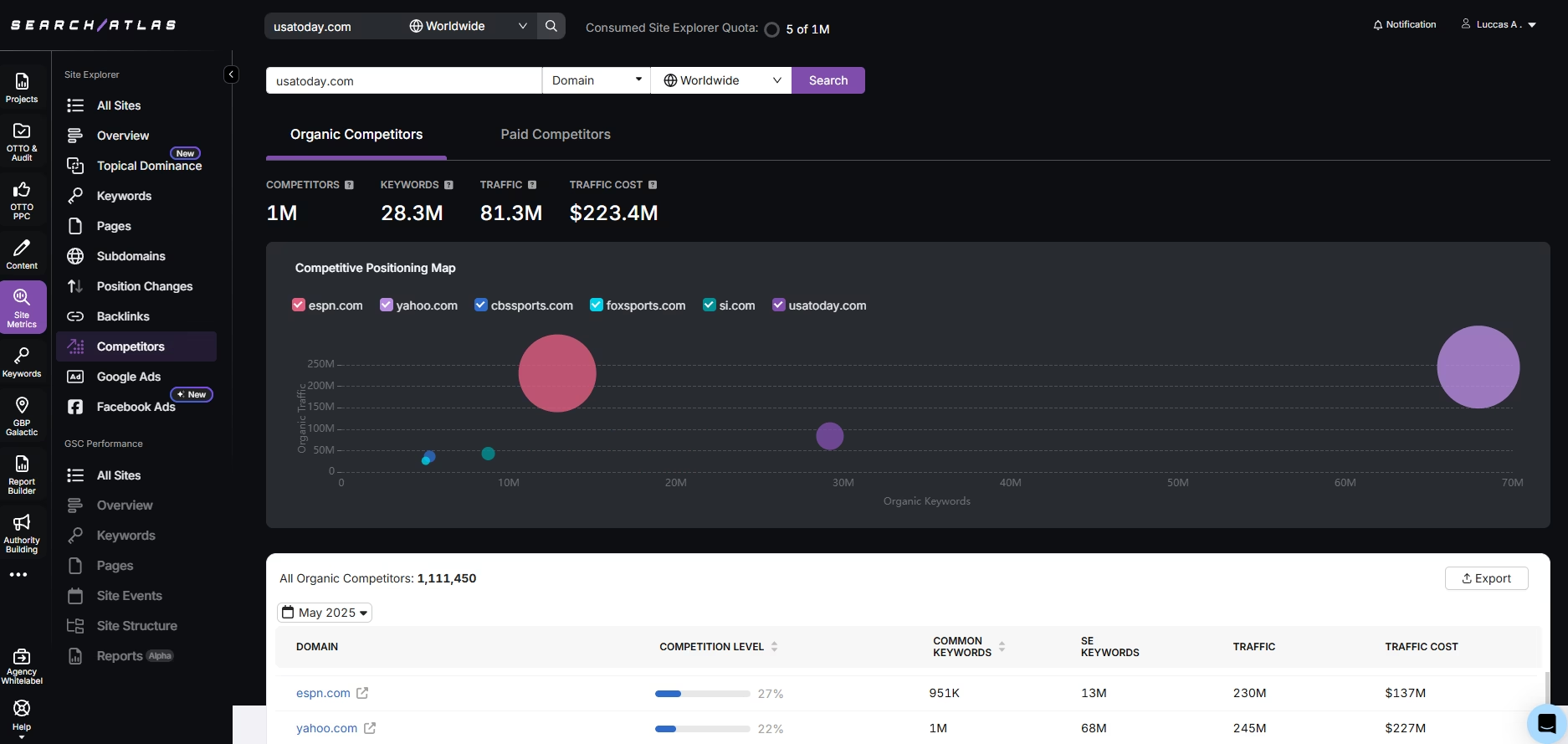
3. Define SMART SEO Goals for Each Market
Set specific, measurable goals for each international market, keeping in mind that SEO objectives may differ significantly between regions due to varying competition levels and market maturity.
Your international SEO goals might include organic traffic targets, keyword ranking objectives, conversion rate improvements, or market share benchmarks. Remember that SEO goals in Germany could differ substantially from those in Japan due to different competitive environments.
URL Structure and Technical Foundation
Setting up the right technical infrastructure is one of the most important steps for international SEO success. Your site architecture determines how search engines understand your geographic and language targeting, and it directly affects visibility in different markets.
4. Choose the URL Structure Type
Select the most suitable URL structure for your business goals, budget, and SEO resources. The three main URL structure options are ccTLDs, subdirectories, and subdomains. They each have distinct advantages:
Country-Code Top-Level Domains (ccTLDs) like example.de or example.fr provide the strongest local trust signals and are ideal for building local authority, but require separate SEO efforts for each domain.
Subdirectories like example.com/de/ or example.com/fr/ offer the most SEO efficiency by consolidating domain authority and are easier to manage from a single dashboard.
Subdomains like de.example.com provide technical flexibility and content separation but may dilute overall domain authority.
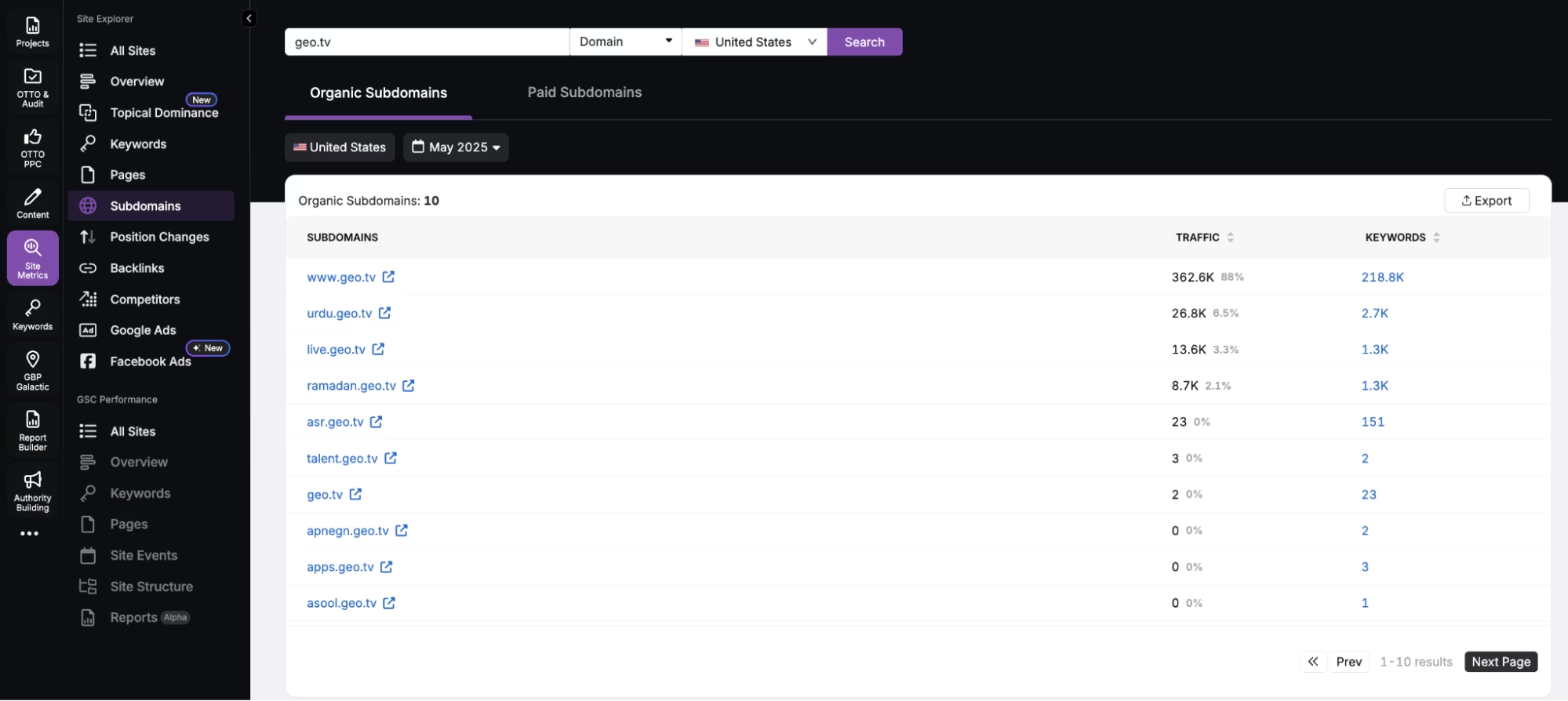
The Search Atlas Site Explorer delivers an in-depth view of any subdomain, including backlink profiles, URL ratings, spam scores, and organic keyword rankings. Simply enter a subdomain URL into the Site Explorer search bar to see authority metrics, competitive positioning, and ranking performance data tailored to that specific subdomain.
5. Optimize URL Structure for International Markets
Clean, logical URL structures improve user experience and help search engines understand your international content organization.
Use consistent patterns across all international versions. If your English site uses /services/, your German version should use /de/dienstleistungen/ rather than mixing structures. Include relevant keywords in the local language when possible.
Avoid using flags, generic parameters, or confusing URL patterns that don't clearly indicate the target language or country.
6. Implement Accurate Hreflang Tags
Hreflang tags are necessary for any website with content in multiple languages or tailored to specific regional markets. Hreflang tags prevent duplicate content issues and ensure users see content in their preferred language.
Go to OTTO & Audit > Site Auditor > Issues and check the International section for hreflang errors, missing tags, or incorrect implementations.
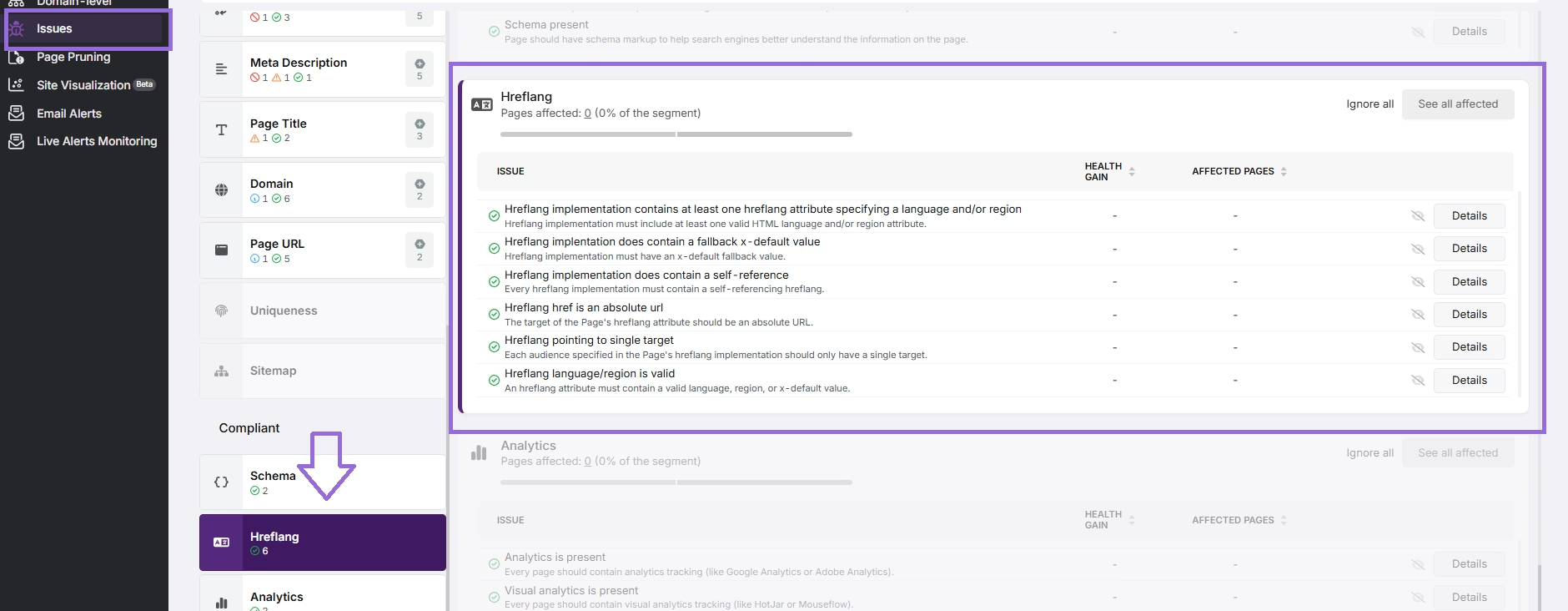
Essential Hreflang Requirements:
- Use proper ISO language and country codes (e.g., "en-US" for English in the United States, "en-GB" for English in the United Kingdom).
- Include self-referencing hreflang tags on each page.
- Add reciprocal hreflang tags between all language variations.
- Specify an "x-default" version for users whose language/location cannot be determined.
- Ensure each page references all its international variations, including itself.
Common mistakes with hreflang tags include using invalid language/country codes, missing reciprocal tags, or creating loops between different language versions.
7. Structure International XML Sitemaps Efficiently
Create separate sitemaps for each language or regional version to help search engines discover and index your global content more efficiently.
Add hreflang tags directly in your XML sitemap using the xhtml:link attribute. This approach reduces page load times by keeping hreflang data out of page headers while still providing clear language and region targeting signals.
Submit each international sitemap to Google Search Console and Bing Webmaster Tools. Create separate Search Console properties for each international version to monitor indexing status and identify market-specific issues.
Use Search Atlas Site Auditor's Crawl Monitoring feature to track how search engines interact with your international sitemaps and make proactive adjustments to improve crawl efficiency.
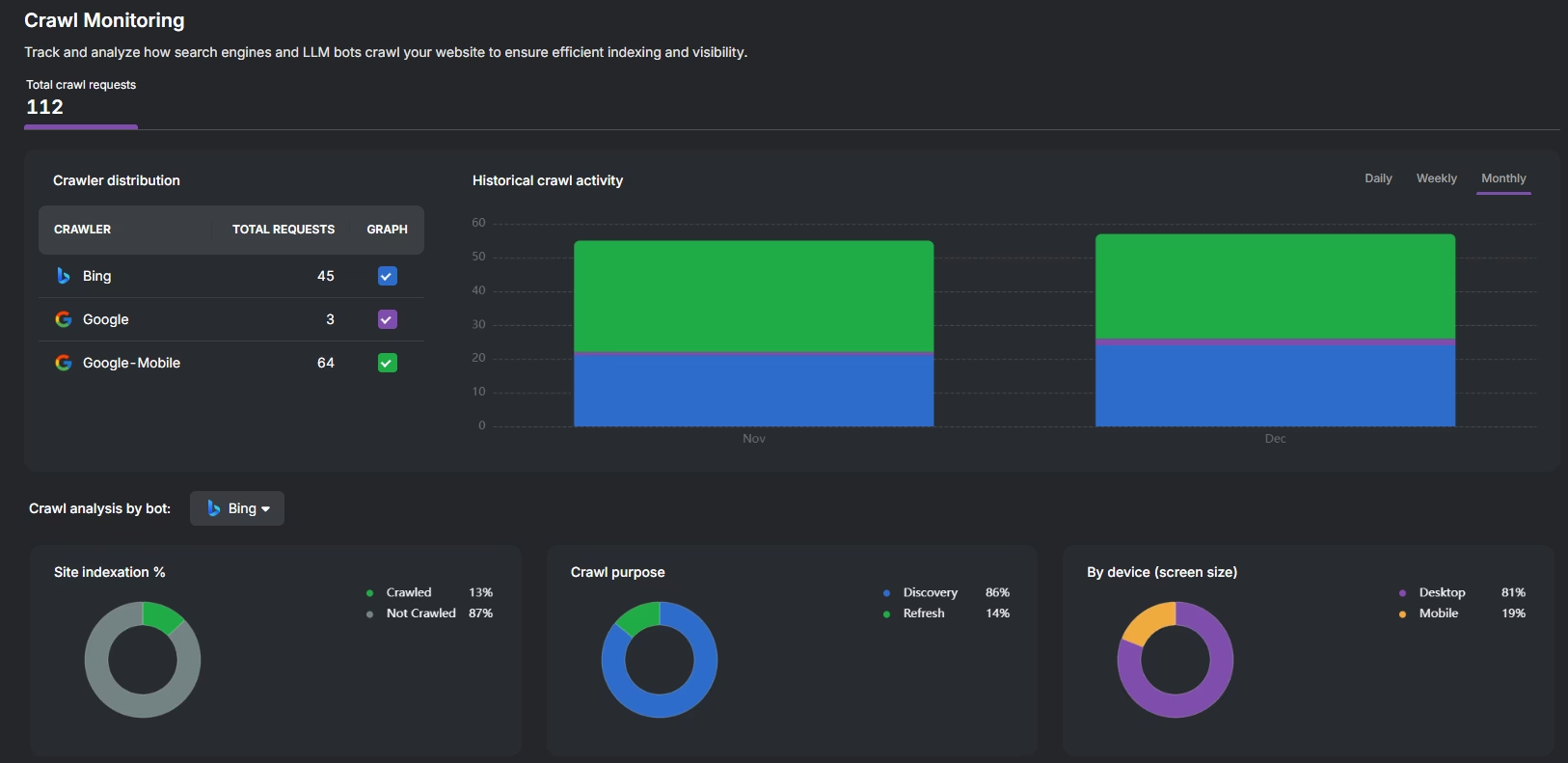
8. Handle Canonical Tags for International Content
Each international page variation should have a self-referencing canonical tag pointing to itself, not to the default language version. This is crucial for international SEO success.
If canonical tags on your international pages point to the "x-default" or another URL, they will conflict with your hreflang implementation and prevent Google from showing appropriate language versions to users.
OTTO SEO automatically deploys proper canonical tags for international content, which ensures they work harmoniously with your hreflang implementation to avoid duplicate content issues.
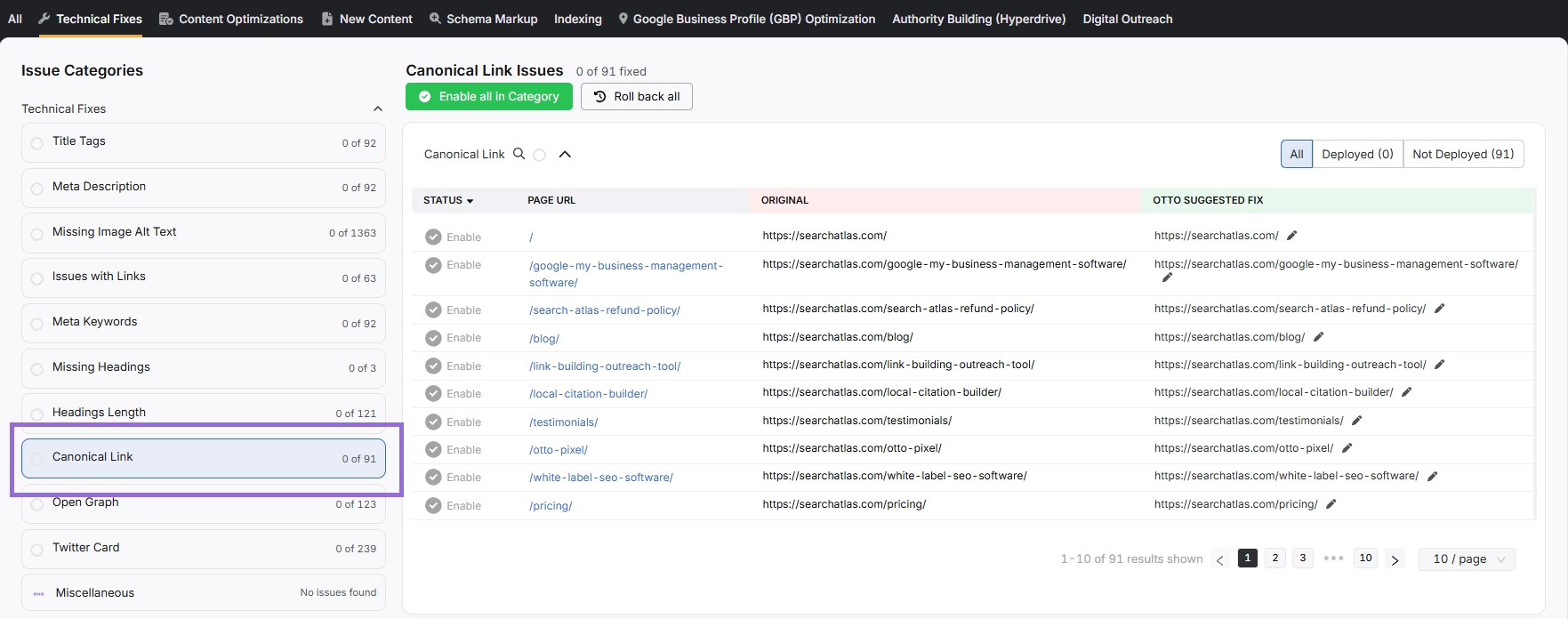
Keyword Research and Content Strategy
International keyword research needs to take into account the local search behavior, cultural context, and competition levels, which vary dramatically between markets.
9. Conduct Region-Specific Keyword Research
Use the Search Atlas Keyword Magic Tool to identify high-value terms in each target market. The Search Atlas Keyword Magic Tool provides comprehensive insights, including search volume, cost-per-click (CPC), keyword difficulty, and top-ranking pages for each region.

In keyword research for your international SEO strategy, you need to analyze local search behavior patterns, considering dialects, synonyms, and region-specific slang. Prioritize keywords with high search volume in the target region, even if they have lower global search volume.
Use the Search Atlas Keyword Gap Tool to analyze how local competitors rank for specific keywords, identifying gaps and opportunities in your international keyword strategy.
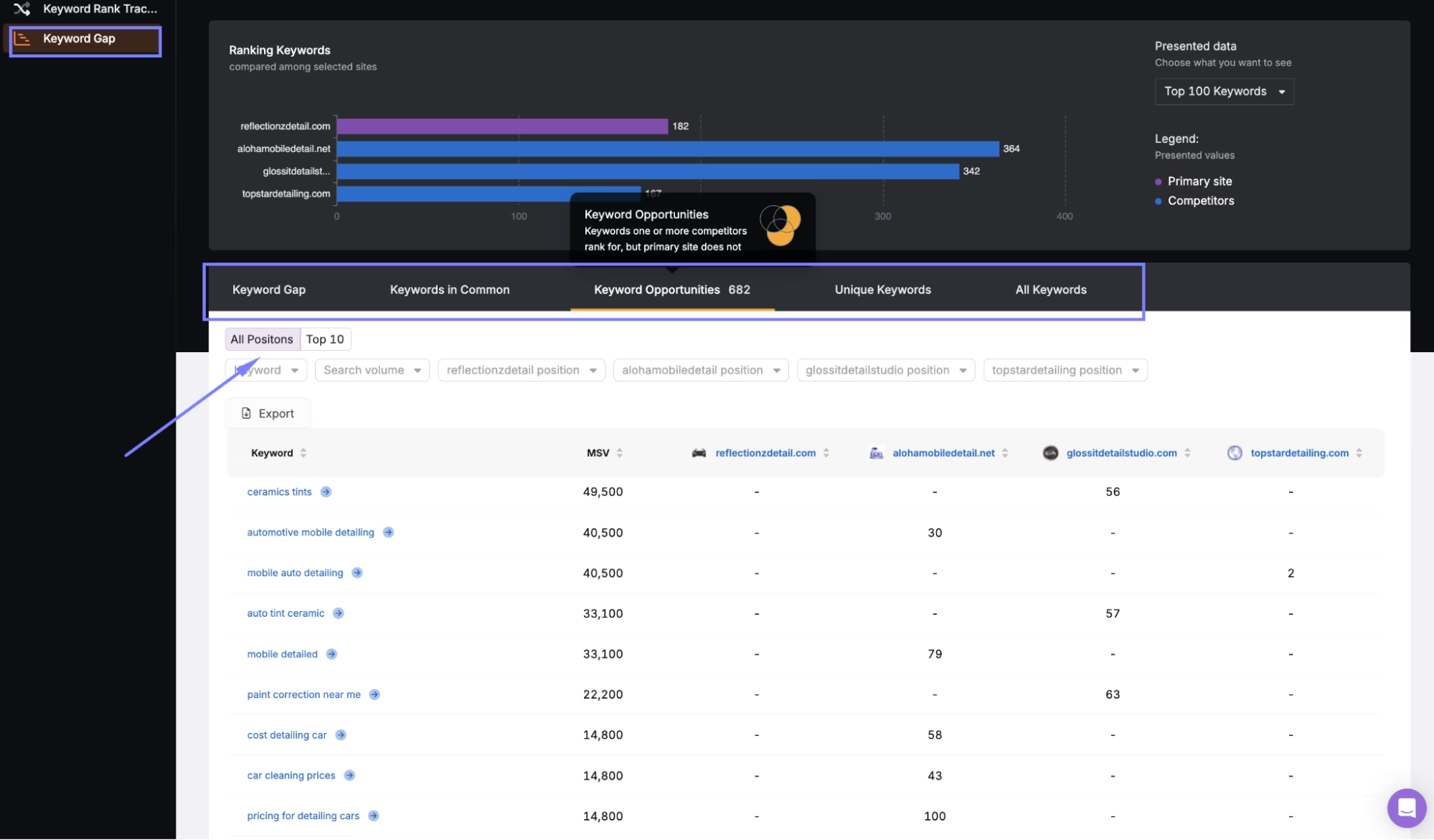
Consider seasonal trends and cultural events that might affect search patterns in different markets. Create keyword lists for each market and add them to the Search Atlas rank tracker for ongoing monitoring.
10. Develop Localized Content Strategy
Creating successful international content demands a deep understanding of local search behaviors, cultural preferences, and regional market dynamics. An effective localized content strategy involves developing unique, culturally relevant materials that address specific regional search intent while maintaining brand consistency across markets.
Take advantage of the Search Atlas Content Genius's AI-powered content generation to streamline this complex process and create high-quality, locally-tailored content at scale.
Instead of relying on translation (which really does not work well for international SEO content), use the Search Atlas Content Genius to develop unique content that resonates authentically with each target audience while maintaining efficiency across multiple markets.
Content Genius enables you to generate localized content by configuring AI folder settings for specific regions and languages. Use the platform's topical mapping feature to identify region-specific content clusters that reflect local search behaviors, business practices, and cultural nuances.
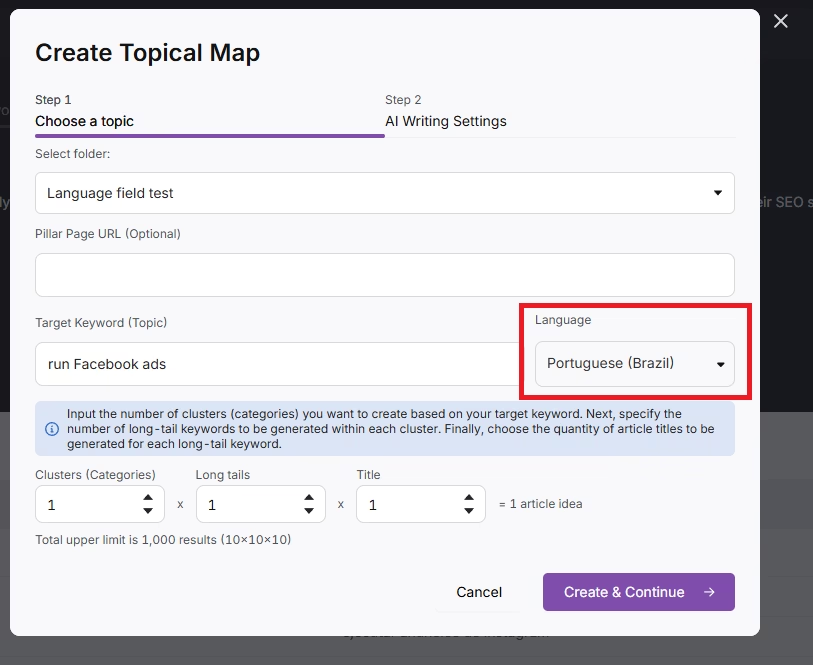
You can incorporate local examples, references, statistics, and case studies into your articles through Content Genius 3's advanced research capabilities. The platform's semantic analysis helps structure content to answer common regional questions directly, significantly improving your chances of appearing in featured snippets and local search results.
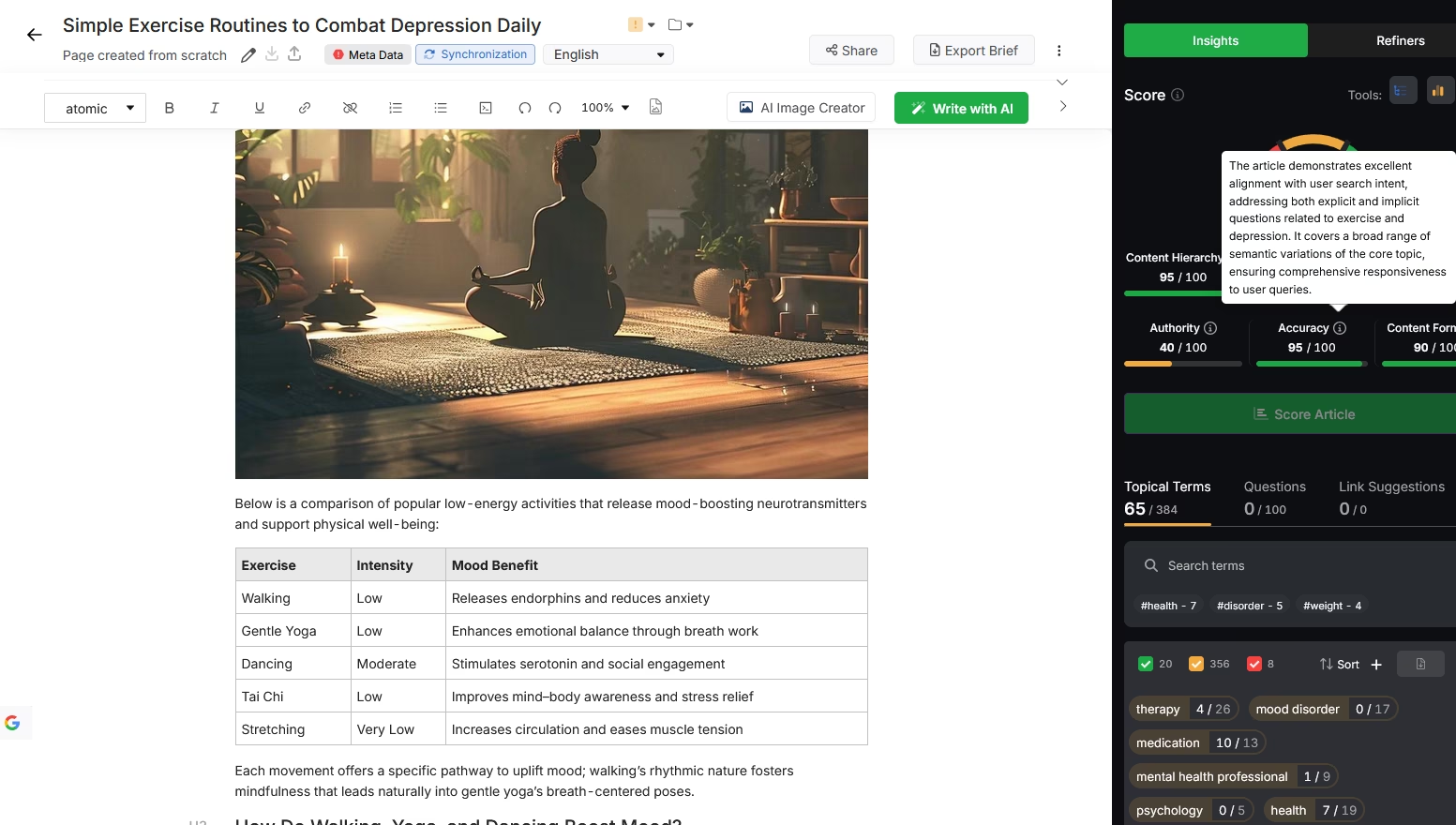
Configure your Content Genius settings to naturally incorporate region-specific keywords while maintaining readability. The AI considers local business practices, legal requirements, and customer service expectations that directly impact your content strategy effectiveness.
Technical Implementation and Performance
International websites face unique technical challenges that can significantly impact user experience and search engine crawling across different regions.
11. Optimize for International Page Speed
Users in different countries experience varying internet speeds and connection types. Monitor Core Web Vitals with the Search Atlas Site Auditor across different geographic regions to identify performance bottlenecks.
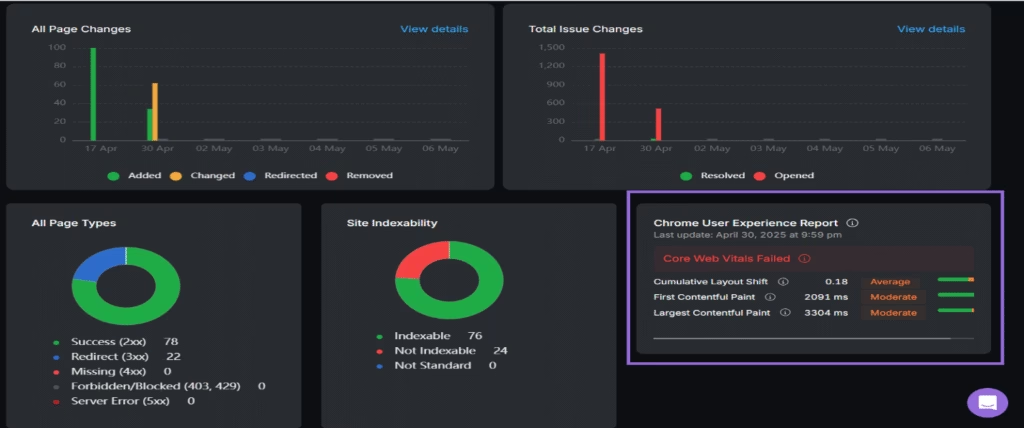
Use a Content Delivery Network (CDN) to serve content from servers closer to your international users. While server location isn’t a major ranking factor, it significantly affects page speed and user experience.
Implement responsive web design using a mobile-first approach to ensure optimal performance across all devices. Use flexible grid layouts, scalable images, and optimized font sizes for different screen sizes and regional device preferences.
12. Implement Structured Data for Each Market
Deploy localized structured data (schema markup) to help search engines understand and present your international content effectively in search results.
OTTO SEO automatically detects international content opportunities and deploys localized structured data, including proper language annotations and regional business information.
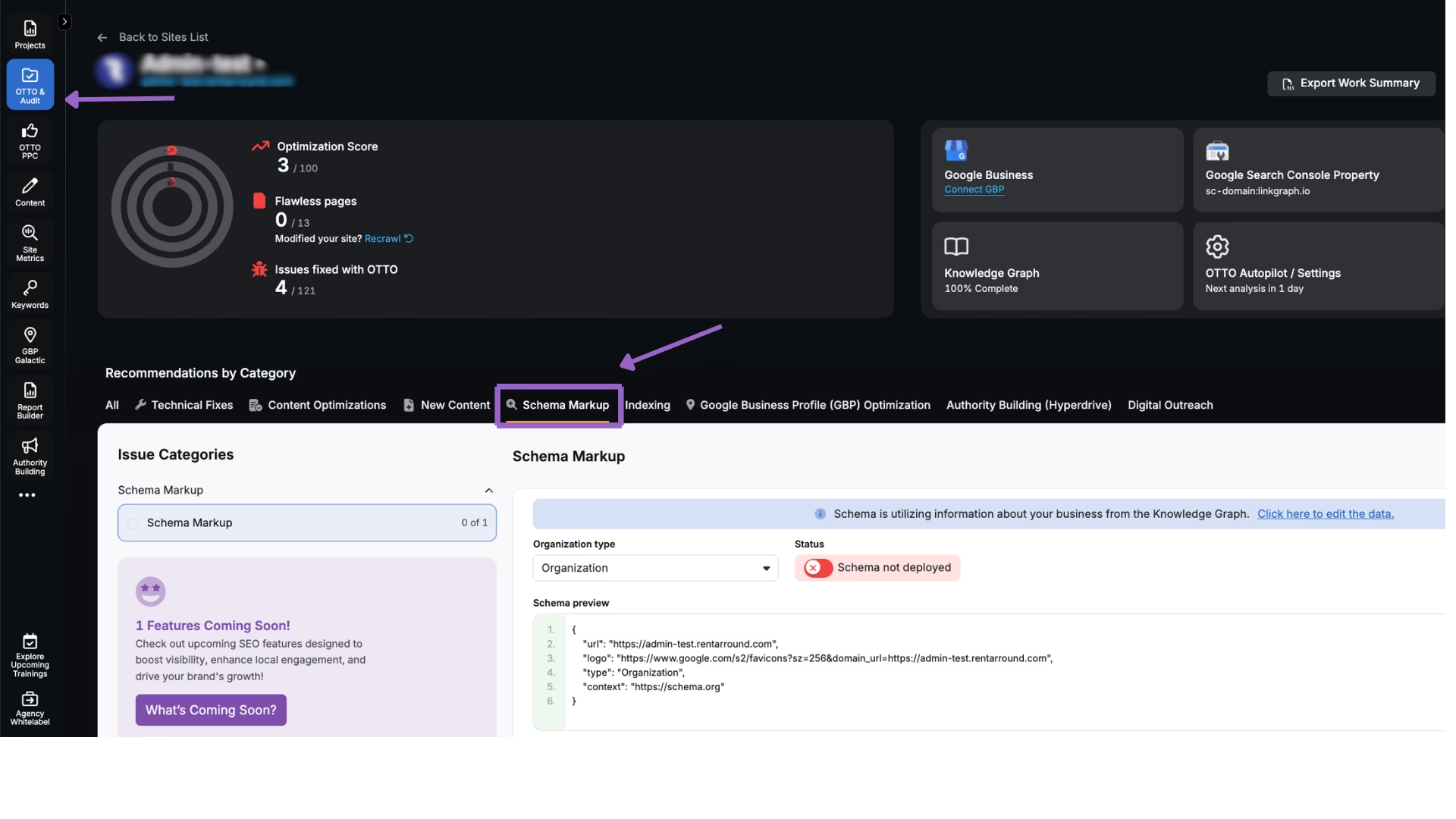
Use schema markup to define business locations, events, products, reviews, and local services for each regional market. This improves search visibility and enables rich results in regional searches.
13. Ensure Proper International Indexing
International pages need to be properly indexed by search engines in each target market to generate visibility and traffic.
Use OTTO's Dynamic Indexing to identify international pages with no impressions in Google Search Console. When deployed, OTTO creates crawlable paths to improve indexation chances for underperforming pages.
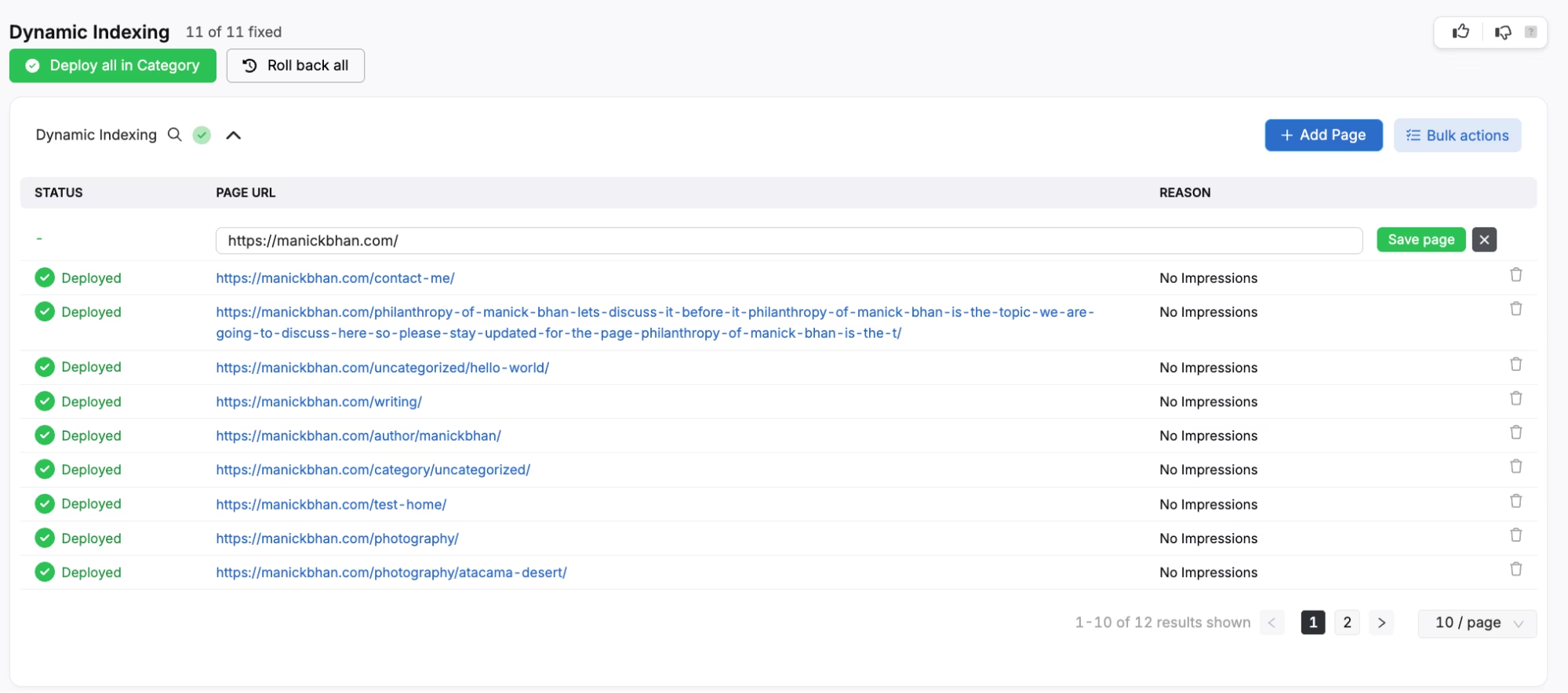
For critical international pages requiring faster indexing, use OTTO's Instant Indexing feature, which runs 24/7 and allows up to 200 pages per project per day to be submitted directly to Google for indexing.
Submit new international pages directly to Google Search Console and Bing Webmaster Tools. Monitor indexing status regularly and address any delays or errors in search engine crawling.
Local Market Integration and Authority Building
Success in international markets requires building local authority and integrating with regional digital ecosystems beyond Google.
14. Optimize for Local Search Engines
While Google dominates globally, some regions have strong local search engines requiring specific optimization approaches:
- Baidu (China): Requires ICP licensing and different technical approaches
- Yandex (Russia): Values different ranking factors than Google
- Naver (South Korea): Integrates heavily with local services
Register with relevant local search engines and adapt your strategy to their specific requirements and user behaviors.
15. Build Region-Specific Authority Through Backlinks
Acquire high-quality backlinks from reputable, region-specific websites to improve credibility and search rankings in international markets.
Use the Search Atlas WILDFIRE tool to build relevant backlinks in target markets through the 2:1 exchange network. Navigate to OTTO & Audit > Authority Building > WILDFIRE to configure campaigns focused on your international markets.
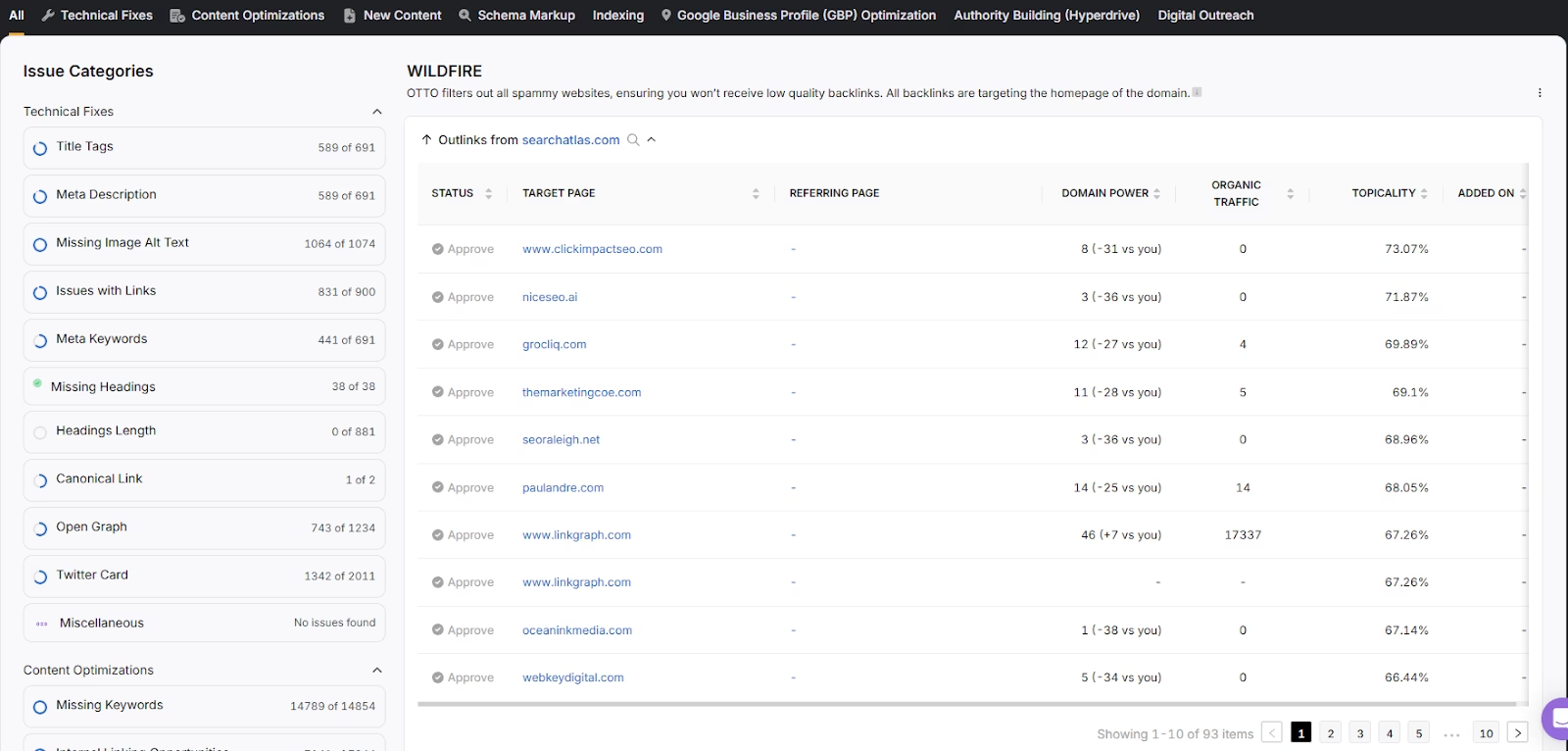
Partner with local influencers, industry experts, and media outlets to gain exposure and high-quality regional backlinks. Submit business listings to regional directories to establish local credibility.
Use the Search Atlas Backlink Research Tool to identify valuable link-building opportunities. Search Atlas Backlink Research Tool lets you analyze domain and page-level insights for competitor websites in each target market.

16. Leverage Local Business Platforms
For businesses with physical locations or serving local markets, optimize international business profiles and citations.
Use the Search Atlas Data Aggregator & Network Submissions to push business data to major aggregators, including Data Axle, Foursquare, Neustar Localeze, Yellow Pages Network, and GPS Network for each target market.
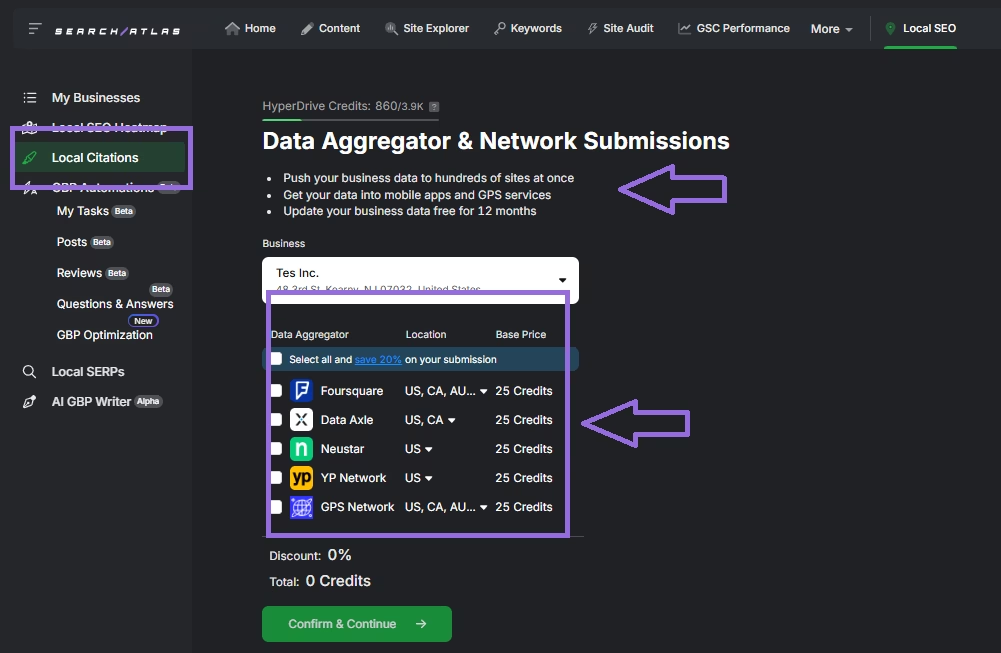
Consider local review platforms, social media networks, and business directories popular in each target region. Maintain consistent NAP (Name, Address, Phone) information across all international listings.
Performance Monitoring and Optimization
International SEO requires ongoing monitoring for multiple markets, languages, and search engines to maintain optimal performance and identify opportunities for improvement.
17. Track Key International SEO Metrics
Monitor essential metrics to measure the effectiveness of your international SEO efforts:
- Organic Traffic by Country/Language: Use Search Atlas analytics to track website visitors from different regions and identify which markets drive the most qualified traffic.
- International Keyword Rankings: Monitor how targeted keywords perform in different markets, as rankings vary significantly by country and search engine.
- Regional Conversion Rates: Track conversion rates across different regions to measure how well your website resonates with international audiences.
- Core Web Vitals by Region: Monitor technical performance metrics, including page loading speed, interactivity, and visual stability across different geographic areas.
- Backlink Profile Quality: Track the number and quality of backlinks from country-specific domains to measure regional authority-building success.
18. Conduct Regular International SEO Audits
Perform comprehensive SEO audits to ensure your international SEO implementation remains effective:
- Technical SEO Review: Check hreflang implementation, site structure optimization, mobile-friendliness, and indexing status for each target market.
- Content and Localization Assessment: Ensure content is properly adapted to each culture and optimized for local search intent, not just translated.
- Competitive Analysis: Use Search Atlas tools to analyze local competitors and identify new keyword opportunities or content strategies in each region.
- User Experience Evaluation: Check for localized contact details, customer support options, payment methods, and compliance with local privacy regulations.
19. Optimize Based on Market-Specific Insights
Use Search Atlas SEO Software Platform to track organic traffic, rankings, and conversions for each target market. Present insights in comprehensive international SEO performance reports.
Continuously refine your strategy based on performance data. Markets that underperform may need adjusted keyword strategies, improved content localization, or enhanced technical optimization.
Monitor branded versus non-branded traffic to evaluate brand awareness in international markets. High branded search volume indicates strong recognition, while growing non-branded traffic shows successful audience expansion.
Put This International SEO Checklist Into Action
To reiterate our international SEO checklist quickly:
Set up monthly technical audits for each market you're targeting. Check hreflang tags, server response times from different locations, and whether your CDN is actually serving content faster to users in those regions.
Don't just translate your content; research what people in each country actually search for. Germans might search for "Rechnung erstellen," while Americans search for "create invoice."
Your keyword research needs to reflect these differences, not just run your English terms through Google Translate.
Monitor your rankings in each country using the Search Atlas tools with local search engines and local IP addresses. What works in the US might tank in Japan. Track which pages get traffic from which countries and identify patterns in user behavior by region.
Fix broken international redirects immediately. Users bouncing because they hit a 404 when switching languages directly impacts your bottom line. Same with slow loading times. If your site takes 8 seconds to load in Brazil, you're losing potential customers before they see your product.
Success in international markets requires patience, cultural sensitivity, and continuous optimization. With proper implementation of these international SEO best practices and the power of Search Atlas tools, you can effectively compete in global markets while delivering exceptional user experiences across cultures and languages.










